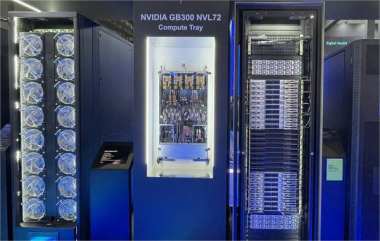
As NVIDIA enters peak mass production of its GB200 AI server chip, the company is preparing to launch its next-generation flagship, the GB300, in the second half of 2025. The upcoming release is expected to significantly boost the AI infrastructure ecosystem, with major cloud service providers accelerating adoption and associated server manufacturers ramping up production.
Industry reports indicate that Hon Hai (Foxconn) is poised to secure the largest portion of GB300-related orders due to its highly vertically integrated operations, making it NVIDIA's most critical server partner for the new chip. GB300-based systems are currently undergoing testing, and mass shipments are expected to begin later this year. With a shared architecture between GB200 and GB300, manufacturers anticipate a smoother ramp-up for the new generation, and GB300-based AI servers are expected to account for over half of Foxconn's server revenue in 2025.
Other manufacturers such as Quanta, Wiwynn, and Inventec are also accelerating their GB300 product timelines. Quanta, having already scaled up shipments of GB200 servers in Q2, is now in the testing and validation stage for GB300, with September set as the targeted shipment window. Despite the short interval between GB200 and GB300 launches, Quanta’s leadership believes the intense demand for large language model training from top-tier cloud infrastructure providers will sustain momentum for both product lines.
Wiwynn plans to begin GB300 server deliveries by August or September and anticipates significant shipment growth in the second half of the year. Although it secured fewer orders in the first wave of the Blackwell-based series, the company reports new market opportunities and client wins during this cycle. Meanwhile, Inventec is targeting entry-level configurations based on the B300 platform, with shipments projected to start by Q3's end.
The performance leap of GB300 is substantial. Manufactured by TSMC, the high-end GB300 NVL72 system integrates 72 Blackwell Ultra GPUs with 36 Grace CPUs based on the Arm Neoverse architecture, delivering 1.5× the AI computing power of GB200 NVL72. Compared to the previous Hopper generation, Blackwell is expected to drive a 50× increase in AI factory revenue opportunities.
GB300's rollout is also catalyzing a new wave of advancements in optical communication, particularly the adoption of 1.6Tbps interconnects using Co-Packaged Optics (CPO) technology. This leap enables a 60% boost in transmission speed and a 40% reduction in power consumption, enhancing training and inference performance for next-gen AI workloads.
Optical module manufacturers are rapidly scaling up production in response. Zhongji Innolight has already begun small-batch deliveries of 1.6T modules, claiming a 12-month lead over industry peers. To meet forecasted 2025 demand, the company is expanding monthly capacity at its Thailand facility from 300,000 to 500,000 units. In Q1 2025, Innolight recorded its highest-ever quarterly revenue at RMB 6.674 billion, with net profit surging over 56% year-on-year.
Accelink Technologies is advancing in-house development of silicon photonics and CW light sources, with 1.6T module validation underway and monthly production capacity reaching 500,000 units. The company posted Q1 2025 revenue of RMB 2.222 billion, up 72.14% YoY, with net profits nearly doubling.
Eoptolink has introduced 800G and 1.6T modules based on single-wavelength 200G optics, alongside a broad portfolio of VCSEL, EML, silicon photonics, and thin-film lithium niobate solutions. The company also launched 400G/800G ZR coherent modules and LPO-based products. In Q1 2025, it achieved revenue of RMB 4.052 billion and net profit of RMB 1.569 billion, representing YoY growth of over 380%.
Huagong Tech has completed in-house development of single-wavelength 200G silicon photonic chips and 1.6T module solutions. Monthly capacity rose from 200,000–300,000 in Q1 to 1 million units in Q2. However, demand still exceeds supply. Its Thailand facility, now operational, is focused on 800G and 1.6T module production, aiming to reach 200,000 units/month by the end of Q2. In Q1 2025, Huagong reported revenue of RMB 3.355 billion and net profit of RMB 409 million, both significantly up year-over-year.




